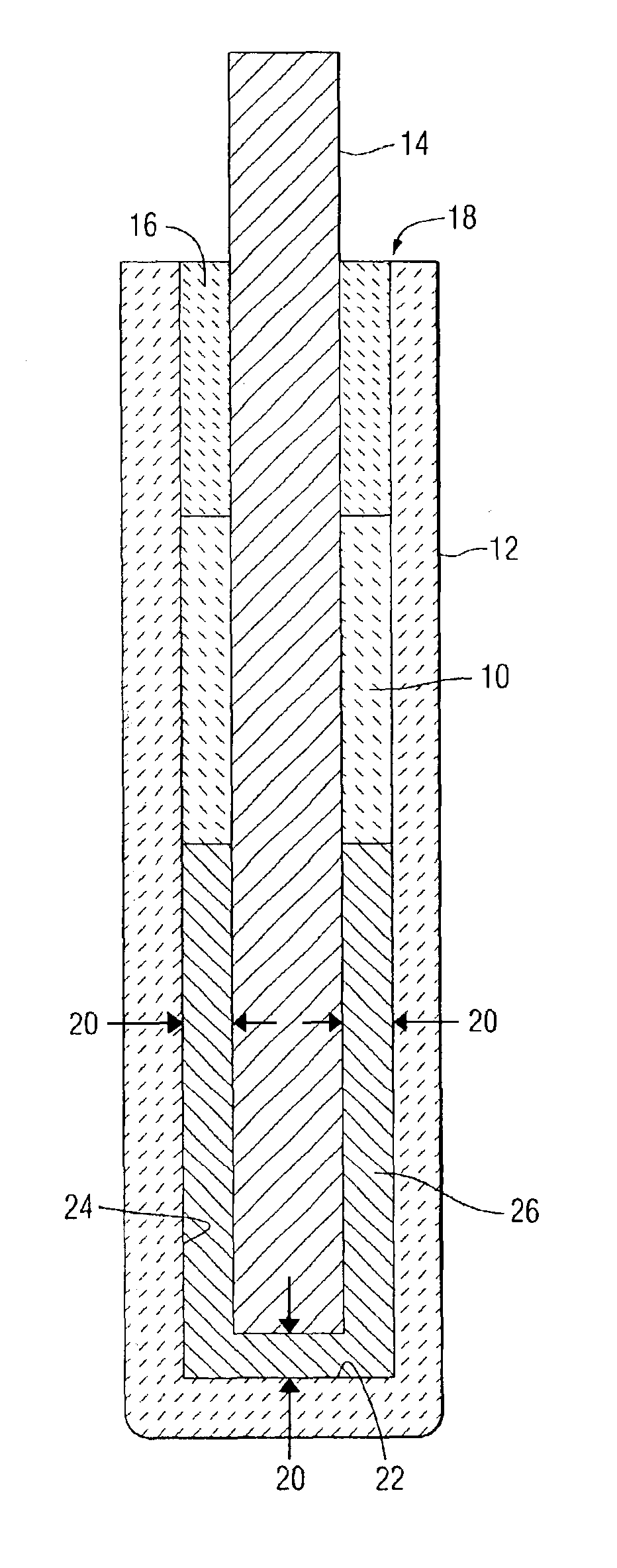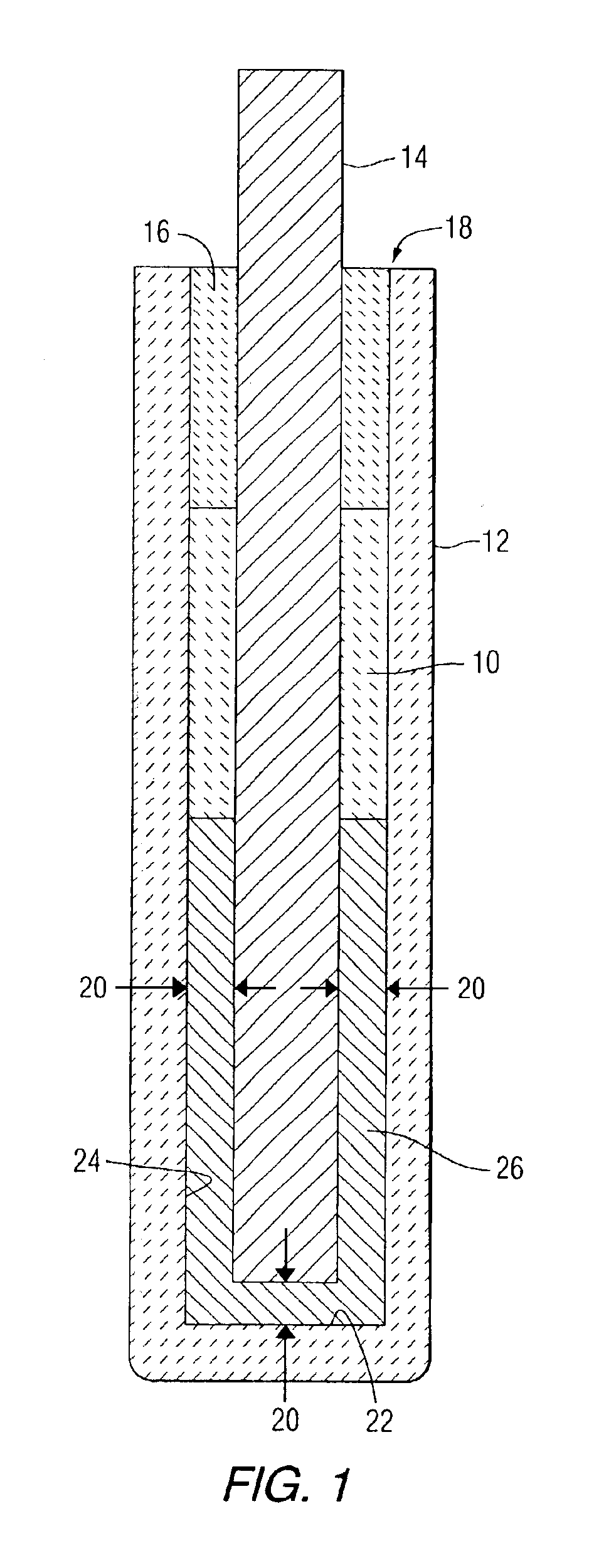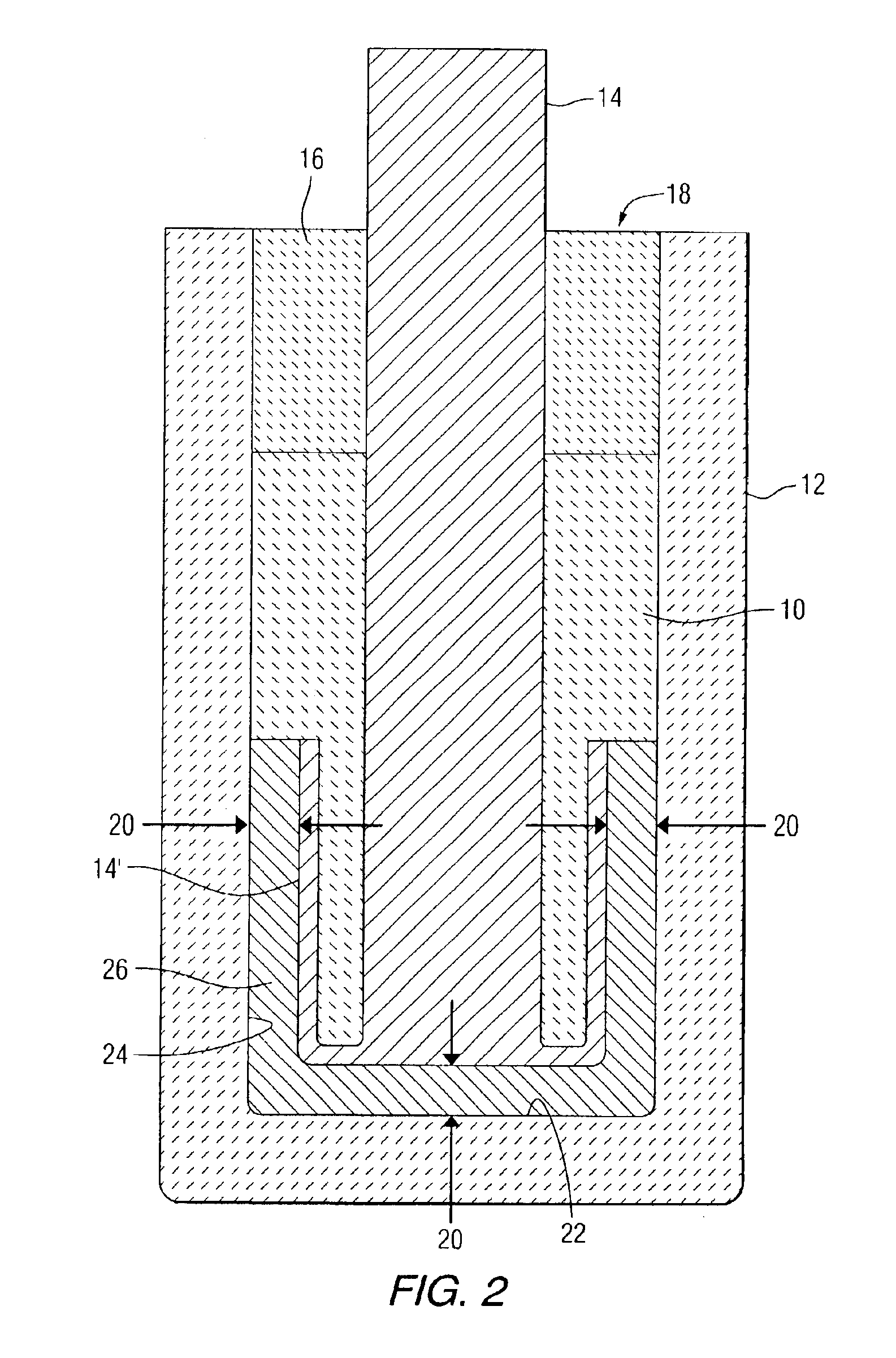Nickel foam pin connections for inert anodes
a technology of inert anodes and foam pins, applied in the direction of coupling contact members, coupling device connections, connection contact member materials, etc., can solve the problems of cracking, diffusion bonding, mechanical connection with limited success, etc., to avoid cracking anodes, stable electrical joint resistance, and the effect of not degrading
- Summary
- Abstract
- Description
- Claims
- Application Information
AI Technical Summary
Benefits of technology
Problems solved by technology
Method used
Image
Examples
example
An electrode assembly using a hollow inert anode 30 cm long, a metal conductor and compliant, reticulated nickel foam was experimentally produced and tested as follows: a Ni foam insert was seated into the base of the anode and a nickel conductor pin pressed into the bore of the foam. This assembly method produced an interference fit between the pin, the foam, and the bore of the anode, creating an electrical connection. After pinning, the remaining upper annular void between the pin and the open bore of the anode was filled with a castable refractory material. When hardened, this castable became a mechanical joint that stabilized and sealed the pin connection within the anode, and supported all mechanical loads. To test the performance of the nickel foam pinned connection, an experimental aluminum electrolysis run was performed. The “cell” for this run was a midsize furnace constructed of steel and lined with a thermo castable refractory. 240-volt resistance heating elements provid...
PUM
| Property | Measurement | Unit |
|---|---|---|
| Fraction | aaaaa | aaaaa |
| Fraction | aaaaa | aaaaa |
| Melting point | aaaaa | aaaaa |
Abstract
Description
Claims
Application Information
 Login to View More
Login to View More - R&D
- Intellectual Property
- Life Sciences
- Materials
- Tech Scout
- Unparalleled Data Quality
- Higher Quality Content
- 60% Fewer Hallucinations
Browse by: Latest US Patents, China's latest patents, Technical Efficacy Thesaurus, Application Domain, Technology Topic, Popular Technical Reports.
© 2025 PatSnap. All rights reserved.Legal|Privacy policy|Modern Slavery Act Transparency Statement|Sitemap|About US| Contact US: help@patsnap.com



